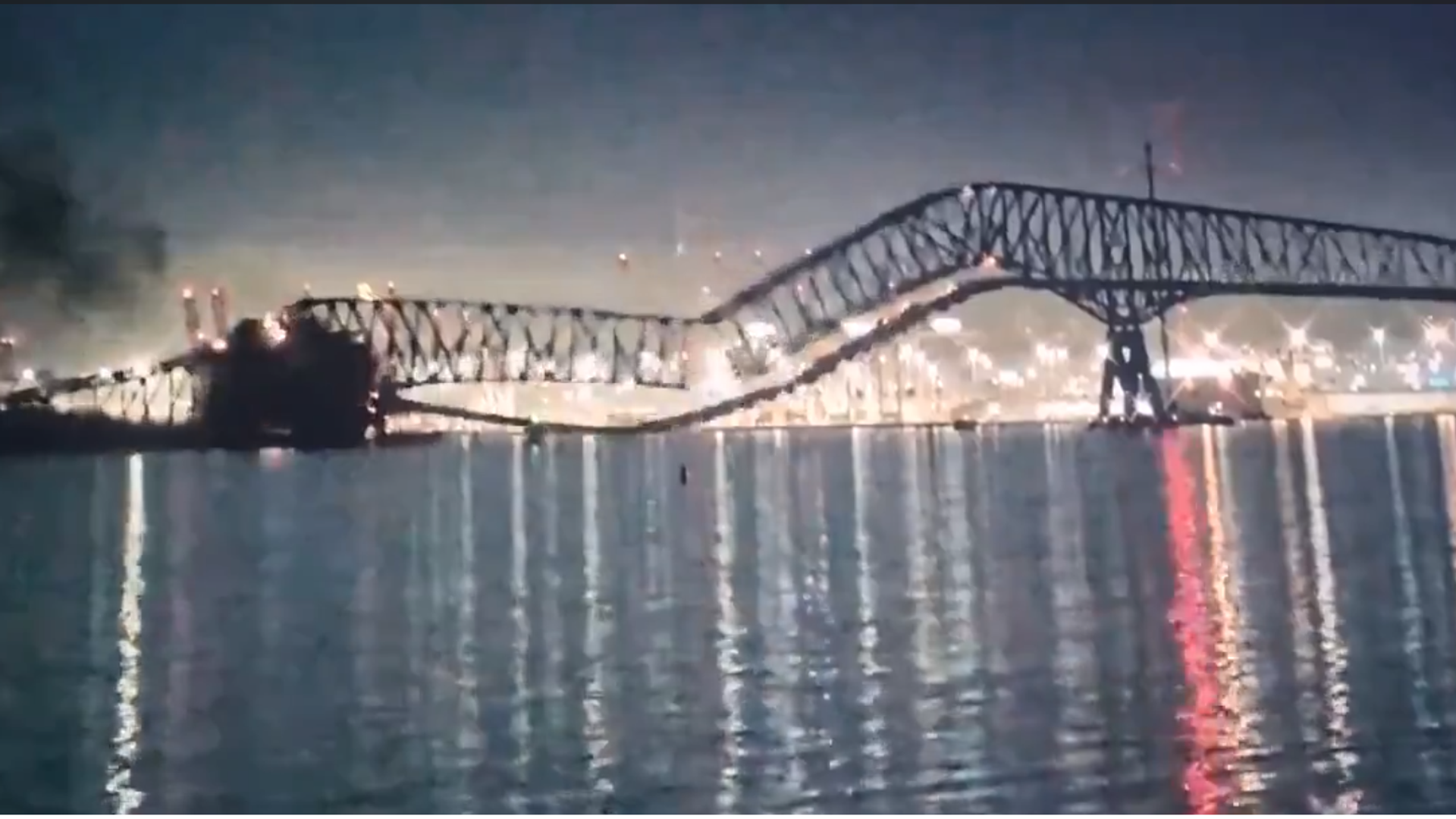https://sputnikglobe.com/20240412/us-enemies-can-exploit-baltimore-bridge-collapse-supply-chain-disruptions---intel-report-1117903731.html
US Enemies Can Exploit Baltimore Bridge Collapse, Supply Chain Disruptions - Intel. Report
US Enemies Can Exploit Baltimore Bridge Collapse, Supply Chain Disruptions - Intel. Report
Sputnik International
Foreign adversaries of the US could exploit the recent collapse of the Francis Scott Key Bridge in Baltimore and ensuing supply chain disruptions, according to a report obtained by ABC News.
2024-04-12T23:34+0000
2024-04-12T23:34+0000
2024-04-12T23:34+0000
americas
us
baltimore
abc news
cargo ship
bridge
https://cdn1.img.sputnikglobe.com/img/07e8/03/1a/1117553802_152:0:1716:880_1920x0_80_0_0_4e845f63d1c4a6d3941131725ed6f8b2.png
The bridge collapse has "reduced the resiliency of US port and shipping operations" and created "opportunities for foreign adversary exploitation," the report quoted the document as saying. The intelligence report notes that in the aftermath of the bridge collapse in the port of Baltimore, any further supply chain disruptions will be unsurmountable. At the same time, the document said that there have been so far no indications that adversaries have made any attempts to exploit the situation. In the early hours of March 26, a commercial Singapore-flagged cargo ship hit the Francis Scott Key Bridge in Baltimore soon after it departed the port for Sri Lanka's Colombo. The bridge collapsed, sending at least eight people from a construction crew working on the bridge into the water. Ship traffic in the port of Baltimore was suspended until further notice following the bridge's collapse. US officials have yet to provide a timeline for the complete restoration of the bridge, which took five years to build in the 1970s.
americas
baltimore
Sputnik International
feedback@sputniknews.com
+74956456601
MIA „Rossiya Segodnya“
2024
Sputnik International
feedback@sputniknews.com
+74956456601
MIA „Rossiya Segodnya“
News
en_EN
Sputnik International
feedback@sputniknews.com
+74956456601
MIA „Rossiya Segodnya“
Sputnik International
feedback@sputniknews.com
+74956456601
MIA „Rossiya Segodnya“
francis scott key bridge in baltimore, collapse of the francis scott key bridge, bridge collapse aftermath, baltimore bridge collapse, us vulnerabilities
francis scott key bridge in baltimore, collapse of the francis scott key bridge, bridge collapse aftermath, baltimore bridge collapse, us vulnerabilities
US Enemies Can Exploit Baltimore Bridge Collapse, Supply Chain Disruptions - Intel. Report
WASHINGTON (Sputnik) – Foreign adversaries of the United States could exploit the recent collapse of the Francis Scott Key Bridge in Baltimore and ensuing supply chain disruptions, according to an intelligence report obtained by ABC News.
The bridge collapse has "reduced the resiliency of US port and shipping operations" and created "opportunities for foreign adversary exploitation," the report quoted the document as saying.
The intelligence report notes that in the aftermath of the bridge collapse in the port of Baltimore, any further supply chain disruptions will be unsurmountable.
"Additional supply chain disruptions will be more difficult to overcome since the standard procedure of partially rerouting ad hoc cargo through the Port of Baltimore is no longer feasible," the document said.
At the same time, the document said that there have been so far no indications that adversaries have made any attempts to exploit the situation.
In the early hours of March 26, a commercial Singapore-flagged cargo ship hit the
Francis Scott Key Bridge in Baltimore soon after it departed the port for Sri Lanka's Colombo. The bridge collapsed, sending at least eight people from a construction crew working on the bridge into the water. Ship traffic in the port of Baltimore was suspended until further notice following the bridge's collapse.
US officials have yet to provide a timeline for the complete restoration of the bridge, which took five years to build in the 1970s.


